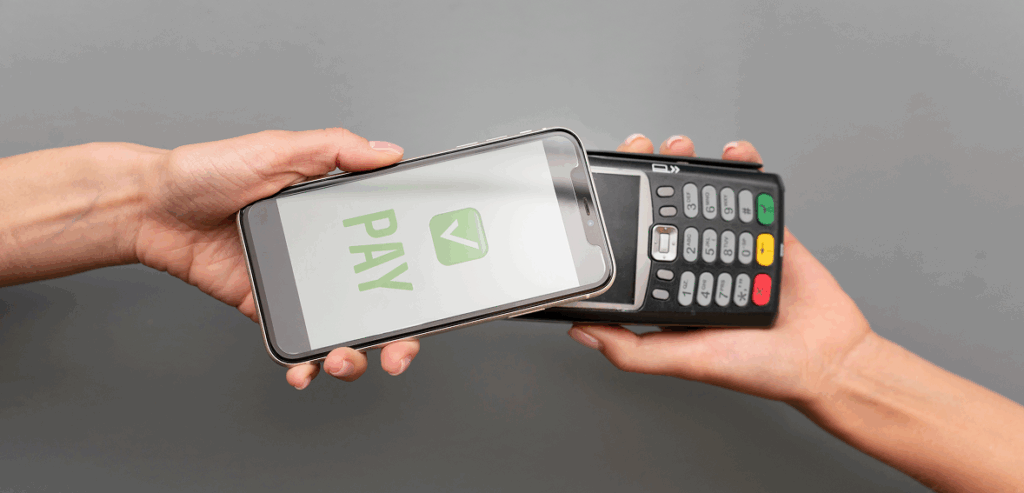
By alphacardprocess May 2, 2025
In today’s fast-moving retail landscape, how customers pay has become just as important as what they buy. The rise of modern payment technologies has created new expectations around speed, convenience, and security. From mobile wallets and contactless cards to buy-now-pay-later options, consumers now have more control than ever over their purchasing journey.
These advancements are not just about making transactions faster. They are fundamentally reshaping the way businesses interact with their customers. Payment methods are now an integral part of the overall shopping experience, influencing brand perception, customer loyalty, and satisfaction.
The Shift Toward Seamless Transactions
Today’s consumers do not just want convenience. They expect it. They prefer businesses that make payments frictionless and intuitive. Long checkout lines, outdated terminals, or complicated steps can lead to frustration and even lost sales.
Faster Payments, Higher Satisfaction
One of the biggest drivers behind the adoption of new payment technologies is speed. Contactless payments, mobile tap options, and digital wallets have all shortened the time it takes to complete a transaction. What once took minutes can now be done in seconds.
When checkout is smooth and fast, customers are more likely to leave with a positive impression. Whether in-store or online, a fast and simple payment process reduces cart abandonment and increases the chances of repeat business.
Omnichannel Integration
Customers no longer interact with a brand through just one channel. They might discover a product online, check it out in-store, and then complete the purchase using a mobile app. Payment technology plays a critical role in tying these experiences together.
Modern systems allow customers to begin a transaction in one environment and complete it in another. Gift cards, loyalty points, or saved payment methods can be used seamlessly across platforms, improving convenience and satisfaction.
Mobile Payments and Digital Wallets

Mobile wallets such as Apple Pay, Google Pay, and Samsung Pay have grown in popularity due to their convenience and enhanced security. These tools allow customers to store credit and debit cards on their smartphones and make purchases with just a tap.
Convenience on the Go
Digital wallets eliminate the need to carry physical cards or cash. For customers, this simplifies everyday transactions. It also opens the door for more spontaneous purchases since the means to pay is always within reach.
For businesses, accepting mobile payments can attract a younger and more tech-savvy audience. It shows that the brand is current and responsive to new technology trends.
Enhanced Security
Mobile payments often use tokenization, encryption, and biometric verification to keep information secure. These features reduce the risk of fraud and increase customer confidence. When people feel their data is protected, they are more likely to complete a purchase.
By supporting mobile payments, businesses are not just offering convenience. They are providing a level of security that builds trust and loyalty.
Personalized Experiences Through Payment Data
Payment technology generates valuable data about customer behavior. This includes what they buy, how often, and how they prefer to pay. When used responsibly, this information can enhance the customer experience through personalization.
Tailored Offers and Promotions
By analyzing purchasing patterns, businesses can create targeted promotions or loyalty programs. For example, a coffee shop might send a mobile offer to customers who frequently buy lattes or reward regular visitors with exclusive deals.
This level of personalization makes customers feel recognized and valued. It also increases engagement and spending over time.
Smarter Inventory and Service Planning
Knowing when and what customers purchase allows businesses to optimize inventory and staffing. This leads to better product availability and faster service. When customers consistently find what they need and are served efficiently, they associate that experience with quality and care.
Payment data can help identify peak hours, trending products, or seasonal preferences, all of which improve operational decision-making and customer satisfaction.
Contactless and Touch-Free Payments in a Post-Pandemic World
The COVID-19 pandemic accelerated the adoption of touch-free technologies. Many customers became more cautious about shared surfaces, and businesses were forced to adapt quickly to maintain safety and trust.
Health and Safety as Part of Experience

Contactless cards and mobile payments reduce the need for physical contact. This has become a selling point in retail, hospitality, and service environments. Customers appreciate businesses that take safety seriously, especially when it aligns with their convenience.
As contactless technology becomes more widespread, customers have come to expect it as the default option. Businesses that lack modern systems risk appearing outdated or out of touch with customer concerns.
Reduced Physical Infrastructure
Touch-free payments have also allowed businesses to experiment with new service models. Self-service kiosks, curbside pickups, and unattended retail formats rely heavily on modern payment systems. These changes streamline the customer journey and reduce dependency on physical cashiers or counters.
By incorporating flexible payment options, businesses can serve more customers with fewer delays and lower operational overhead.
Buy Now, Pay Later Options and Flexible Financing
Buy now, pay later services such as Klarna, Afterpay, and Affirm are becoming common in both e-commerce and brick-and-mortar retail. These services let customers split purchases into smaller payments over time, often with no interest.
Empowering Purchase Decisions
Flexible financing options can increase purchasing power, especially for larger or discretionary items. They reduce the hesitation that comes with upfront cost and make it easier for customers to commit to a purchase.
For businesses, offering these services can boost average order value and reduce cart abandonment. Customers appreciate having choices, especially when it helps them manage their budget.
Building Trust and Transparency
Buy now, pay later providers often promote transparency by showing the exact payment schedule at checkout. This clarity supports informed decisions and avoids surprises, reinforcing a sense of fairness in the transaction.
Businesses that offer clear, flexible payment plans position themselves as customer-centric and accessible to a broader market.
Reducing Friction Across Payment Channels
Friction during payment is one of the main reasons customers abandon purchases. Whether it is a slow-loading website, a complicated checkout process, or limited payment options, these hurdles impact satisfaction and loyalty.
Streamlining Online Checkout
One-click checkout, stored payment information, and guest payment options can significantly improve online shopping. Customers want speed and simplicity. Making them create an account or re-enter information creates unnecessary friction.
Modern payment systems help streamline the online experience by auto-filling details and supporting a wide range of payment methods. These enhancements reduce drop-off rates and encourage more frequent purchases.
In-Store Innovations
Even in physical stores, technology is reducing friction. Smart terminals, handheld checkout devices, and QR-code-based systems make payments easier. Customers no longer need to stand in long lines or wait for assistance.
These innovations contribute to a smoother in-store journey and make it easier for staff to focus on service rather than just processing transactions.
Building Loyalty Through Payment Simplicity
Customer loyalty is not built through rewards programs alone. It often starts with how easy and pleasant the purchasing experience is. Payment technology plays a central role in shaping that experience.
Predictability and Confidence
When customers know what to expect at checkout, they feel more in control. Offering consistent and reliable payment options creates a sense of familiarity. Whether shopping in-store, online, or through an app, they should encounter the same payment experience every time.
Consistency builds trust. Trust leads to repeat business. A seamless payment process becomes part of the brand promise that customers come to rely on.
Integration With Loyalty Systems
Many modern payment platforms allow integration with loyalty systems. Customers can earn points, use rewards, or apply discounts automatically at checkout. This eliminates the need for separate cards or apps and enhances the value they receive with every transaction.
Simplifying these interactions makes customers more likely to participate in loyalty programs and engage with the brand more often.
Conclusion
Payment technology has evolved from being a behind-the-scenes operation to a central part of the customer experience. Today’s consumers expect payments to be fast, secure, and convenient. They also appreciate personalized service, flexible options, and touch-free alternatives.
By adopting modern payment systems, businesses can meet these expectations and deliver experiences that build loyalty and satisfaction. Whether through mobile wallets, contactless cards, or intelligent checkout design, the way people pay is shaping how they feel about the brands they choose.
As technology continues to advance, the most successful businesses will be those that view payments not just as a transaction, but as an opportunity to serve, engage, and delight their customers at every step.